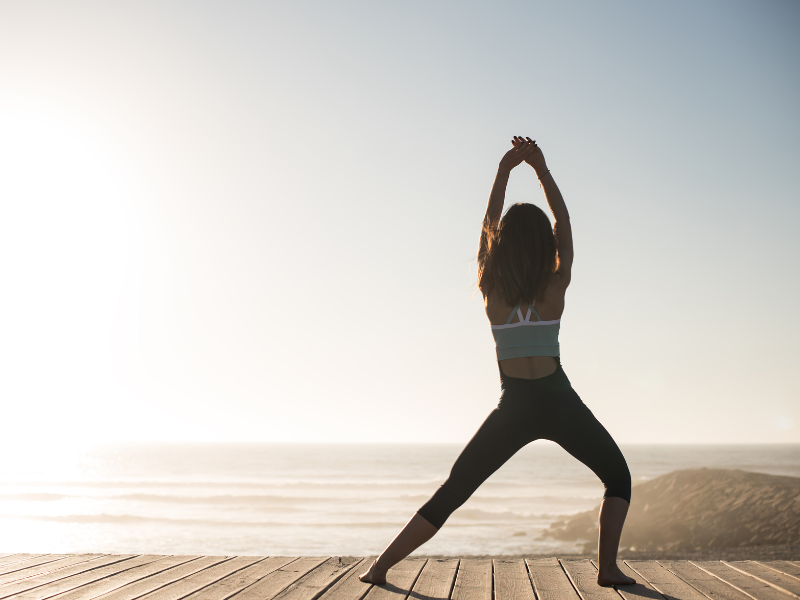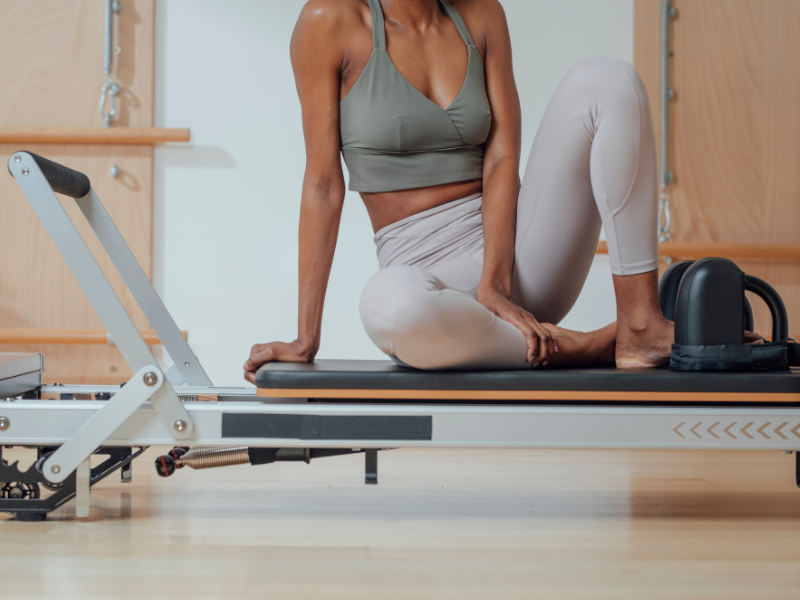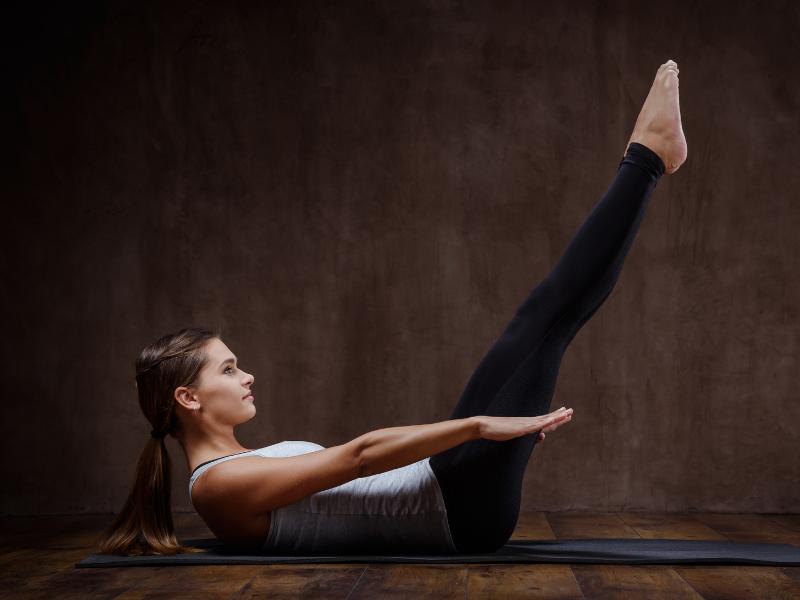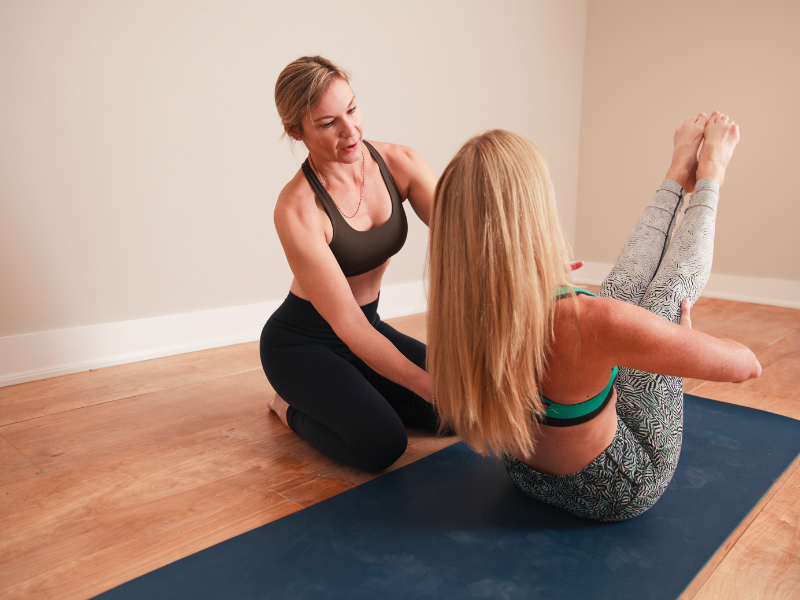


Do you feel unmotivated or too out of shape to try out Pilates? Think again. In this article, discover how just a few weeks of this workout style has helped people have inspiring changes, from improved posture and core strength to heightened flexibility and stress relief. Whether you’re jumping in for the first time or finding your way back to exercise, this guide, with its simple expert tips, will have you signing up for that next Pilates session!
Introduction to Pilates

Pilates is a gentle but powerful exercise system that builds core strength, improves posture, and enhances both physical and mental well-being. Developed by German-born Joseph Pilates in the early 20th century, it relies on precise, flowing movements, mindful breathing, and focused concentration. Pilates also promotes a sense of calm and relaxation, contributing to improved mental wellbeing and clarity [1].
First embraced by dancers to rehabilitate injuries and counteract repetitive strain, Pilates soon proved beneficial for everyone. Whether on a mat or using reformer equipment, its exercises target deep abdominal and lower-back muscles to boost stability and alignment. It is adaptable to any fitness level, and regular practice eases tension, raises energy, and sharpens flexibility and coordination without joint stress [1]. The slow, deliberate movements focus on precision and muscle engagement, making the sessions both physically rewarding and mentally fulfilling. So, how does one begin their Pilates journey? Read more to find out
Getting Started
Here are some tips and guidance for how you can begin your Pilates journey, and witness the Pilates before and after transformation as a result of it:
Getting Started with Pilates
To ease into Pilates, aim for one to two sessions per week. Think of these workouts as a complementary addition to your usual cardio and strength routines. Pilates enhances your overall fitness but doesn’t substitute for traditional aerobic or heavy-resistance training.
Session Length & Progression
If you’re brand new to Pilates, begin with at least 20 minutes per workout and gradually extend your sessions as you grow more confident with the movements. Most people notice a visible difference in muscle activation and posture within six to eight weeks of consistent practice.
Choosing Your First Class
Start with a mat-based Pilates class, which requires no special apparatus. Smaller group settings or private lessons led by a certified instructor are ideal: they give you hands-on guidance and a solid grasp of the core principles before you experiment with reformers or towers.
Essential Gear & Mindset
All you really need is a quality exercise mat and comfortable, form-fitting clothes that allow a full range of motion. Above all, listen to your body, progress at your own pace, and don’t hesitate to ask questions as your instructor is there to ensure you master each movement safely and effectively.
Reformer Pilates

Reformer Pilates takes the mat-based practice up a notch by utilizing a specialized machine that offers adjustable resistance through a system of springs, pulleys, a foot bar, and fixed platforms. As you push and pull against the springs, the unstable, cushioned carriage demands precise control, engaging deep core muscles, stabilizers, and larger muscle groups alike, which trains strength, alignment, and balance. The slow and steady burn experienced during these workouts promotes both physical and mental well-being.
Beyond core work, every reformer session is a full-body workout, targeting everything from the diaphragm and pelvic floor to the glutes, back, and obliques while remaining low-impact on joints [2]. Classes also utilize props like Pilates balls, rings, ankle weights, and bands to further challenge coordination and flexibility. Smaller class sizes or one-on-one instruction ensure you master the technical choreography safely.
With consistent practice (two reformer pilates classes a week is a great starting point), you’ll not only build lean muscle tone and enhance posture, but also gain body awareness, reduce injury risk, and enjoy the mental clarity that comes from mindful movement. Participants typically do not leave the class drenched in sweat, making it a more relaxed and controlled environment focused on mind and body connections.
Mat Pilates

Mat Pilates is the original form of Pilates, built entirely around body-weight exercises that sculpt and lengthen muscle while honing core strength, limb stability, and full-body mobility. Pilates involves roughly 50 foundational movements (expanded over time to more than 500 variations) that you can perform anywhere with just a mat or even a sturdy towel. Unlike yoga, which focuses more on flexibility and recovery, Mat Pilates emphasizes core strength and stability.
At its core, Mat Pilates follows six guiding principles—Breath, Concentration, Centering, Control, Precision, and Flow, with each movement flowing seamlessly into the next [3]. Stretching is an integral part of Mat Pilates, helping to alleviate physical tension and contributing to overall well-being. Because you’re working against gravity rather than springs or pulleys, exercises can be easily modified for every age, body type, or fitness level—even from a seated position. The result is a low-impact, equipment-free practice that improves posture, unlocks healthy ranges of motion across the entire body, and lays the groundwork for any apparatus you might explore later.
What Can You Expect: Changes Before and After Pilates

Before beginning this form of workout, you may experience more tightness in your hips, shoulders, or lower back, alongside a lack of balance, muscle tension, and an unideal posture. Below are the changes you will begin to observe once you incorporate Pilates workouts in your training.
4–6 Weeks:
- You’ll start engaging core stabilizers more easily, standing and sitting taller with less effort.
- Chronic tight spots—like neck or low-back stiffness—begin to soften as controlled movements retrain your muscles.
8–12 Weeks
- Hips, hamstrings, and shoulders feel more open, letting you move through tasks with ease.
- Large and small muscle groups work together smoothly, boosting stability and daily energy levels.
3+ Months & Beyond
- Muscles gain length and definition without bulk, especially your abs.
- Improved joints minimize injury risk, while the practice’s mindful focus sharpens concentration and reduces stress.
Discover wall pilates:
Wall Pilates For Weight Loss: A Guide To The Best Exercises
Wall Pilates Workout For Beginners: 5 Simple Exercises To Try
Conclusion
We hope that this article has given you a better idea of how Pilates can transform your overall health and fitness in just a few weeks, making it a great addition to your daily workout. For more tips and resources that can help you in your exercise journey, check out the JustFit app!





